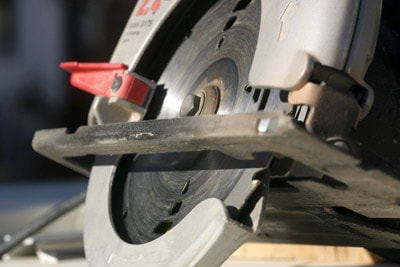When it comes to home improvements, many of us have champagne tastes on a beer budget—we noodle out the perfect plan for a project, and then the contractors’ bids come in at twice what we can afford.
So we become do-it-yourselfers.
We know that, by eliminating the labor expense, we can often chop a project’s cost in half.
The answer depends on a number of factors, including the type of project, your abilities, your collection of tools and safety gear, your time, and your inclination to roll up your sleeves.
Consider the Risks
Unless you are a highly skilled do-it-yourselfer, avoid taking on jobs that may be dangerous, particularly difficult, or where a mistake can be quite costly.
Some jobs simply are not worth the risk.
For example, think twice before doing:
• Extensive electrical work
• Plumbing that involves crawling under the house
• Roofing work on a steeply pitched or high roof
• Difficult or laborious work, such as removing or pouring a concrete floor
• Siding work that requires scaffolding higher than two stories
• Work where there may be hidden mysteries
• Any other task that you’re not confident you can handle.
Consider Your Skills, Tools & Time
Before you decide to take on a DIY task, be realistic about your skills, tools, and time.
Skills. Don’t try to take on work that you won’t be able to finish or that may end up looking unprofessional. Avoid intricate work or work that requires a high degree of craftsmanship unless you’re competent at the job. For example, don’t plan on building raised-panel cabinets unless you have the necessary cabinetmaking skills.
Tools. Be aware that you’ll need special tools for some jobs. You can rent tools, and you can often buy tools with what you’ll save on labor, but if you don’t already own the tools, you probably don’t have very much experience at using them. Once again, think twice before jumping in with both feet unless you have experience with the necessary tools.
Time. Don’t forget to take your time into consideration. Even spare time has a value—and the value of yours is worth factoring into the equation. Although a professional repair person can probably do the job considerably faster than you can, you actually may complete some jobs sooner by doing them yourself because you won’t have to wait for professionals to show up.
What Are Your Options?
There is definitely something to be said for hiring a pro to handle a project from start to finish—particularly if you find a professional who gives you a quality job at a good price.
Unfortunately, that isn’t always easy.
The best way to find good people is through personal recommendations. Talk to friends or neighbors who have had similar work done and were happy with the results and the service.
Or, you can talk to local building supply dealers or turn to Google—your most likely source of names if you’re dealing with a home-repair emergency.
So that you’re not left to this device in a pinch, it pays to have the names and numbers of good repair services on hand.
It’s also smart to check with the local chapter of the Better Business Bureau to make sure there isn’t a history of consumer complaints against the pro you plan to hire.
For problems with products or some materials—such as appliances, flooring, or carpeting—always check the conditions of your warranty before hiring a repair person or doing the work yourself. By using factory-authorized service people, you may not have to pay for the repair if the material is under warranty. And if you don’t use authorized service people, not only will you have to pay—you may void your warranty.
Another option is to do some of the work yourself and save the more complicated tasks for the pros. Demolition work usually can be tackled by homeowners who aren’t afraid of getting a little dirty. Painting is another good way to be involved in the project and save money. But be aware that, if you set up this type of arrangement, you must stay ahead of your contractor—he or she won’t want to be slowed down by the need to wait for you.








 Don Vandervort writes or edits every article at HomeTips. Don has:
Don Vandervort writes or edits every article at HomeTips. Don has:




